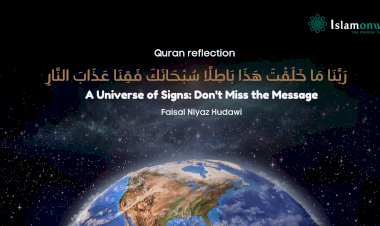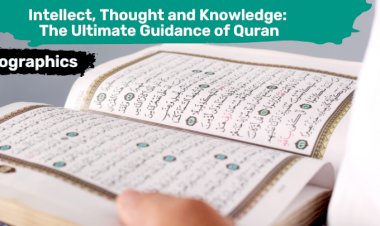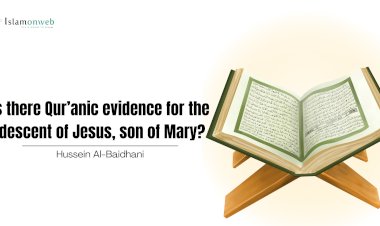Exploring Modern Embryology in the Quran: A Comparative Analysis
Introduction
The Quran has been a source of guidance and inspiration for over a billion Muslims worldwide. In recent times, scholars and researchers have taken an interest in comparing the scientific knowledge mentioned in the Quran with modern scientific discoveries. One area of significant focus has been embryology. Modern embryology began with the 17th century invention of the microscope. However, the concept of human development in stages was not widely recognized until later. The Holy Quran and Sunnah provided detailed descriptions of human development from gametes and conception to full-term pregnancy and delivery in a time when science wasn’t developed. These sources corrected superstitious and vague ideas about human development.
Embryology in the Quran
Embryology refers to the references made in the holy scripture of Islam regarding the development and formation of human beings within the womb. These references have been a topic of fascination and scholarly analysis, as they appear to align with certain aspects of modern embryological knowledge, despite being revealed over 1400 years ago.
The Quranic descriptions of embryology can be found in various verses, with one of the most notable passages being in Surah Al-Mu’minun from the verses 12 to 14. These verses are often cited in discussions about embryology in the Quran:
وَلَقَدۡ خَلَقۡنَا الۡاِنۡسَانَ مِنۡ سُلٰلَةٍ مِّنۡ طِيۡنٍ ۚ ﴿12﴾ ثُمَّ جَعَلۡنٰهُ نُطۡفَةً فِىۡ قَرَارٍ مَّكِيۡنٍ ﴿13﴾ ثُمَّ خَلَقۡنَا النُّطۡفَةَ عَلَقَةً فَخَلَقۡنَا الۡعَلَقَةَ مُضۡغَةً فَخَلَقۡنَا الۡمُضۡغَةَ عِظٰمًا فَكَسَوۡنَا الۡعِظٰمَ لَحۡمًا ثُمَّ اَنۡشَاۡنٰهُ خَلۡقًا اٰخَرَ ؕ فَتَبٰـرَكَ اللّٰهُ اَحۡسَنُ الۡخٰلِقِيۡنَ ؕ ﴿14﴾[1]
Man We did create from a quintessence (of clay); then We placed him as (a drop of) sperm in a place of rest firmly fixed; then We made the sperm into a clot of congealed blood; then of that clot We made a (foetus) lump; then We made out of that lump bones and clothed the bones with flesh; then We developed out of it another creature: so blessed be Allah the Best to create![2]
Here's a breakdown of the stages described in these verses and their potential alignment with modern embryological understanding:
- Creation from Clay: The Quran's mention of creation from "extract of clay" can be understood as a metaphor, linking humans to the Earth. According to Tafsīr-e-Jalalain, the phrase "min sulālatin" can be derived from "salaltu'l-shay'a mina'l-shay'," which means 'I drew one thing out of another,' suggesting the substance of Adam was extracted from clay. This connection between ‘sulālatin’ and "extraction" is related to the semantic meaning of "min tīnin," meaning clay.
- Drop in a Place of Settlement: This stage might refer to the initial fertilization of the egg and the establishment of the zygote in the uterine lining.
- 'Alaqah (Clinging Substance): The term 'alaqah is often translated as a "leech-like suspended thing" or a "clinging substance." (Then We made the Nutfah into a clot,) meaning, `then We made the Nutfah, which is the water gushing forth that comes from the loins of man, i.e., his back, and the ribs of woman, i.e., the bones of her chest, between the clavicle and the breast. Then it becomes a red clot, like an elongated clot.' Ikrimah said, "This is blood.''[3]
- Muḍġaẗ (Chewed-Like Lump): ‘Muḍġaẗ’ can be understood as the next stage of development, where the embryo starts to take on a more recognizable form, which is like a piece of flesh with no shape or features. Some scholars have likened this term to the appearance of a chewed substance or a partially formed fetus.
- Formation of Bones: (then We made out of that little lump of flesh bones,) meaning, `We gave it shape, with a head, two arms and two legs, with its bones, nerves and veins.' The mention of bones being formed suggests the beginning of the skeletal system's development, which aligns with modern embryological knowledge. Bones are indeed among the first structures to form in a developing embryo.
- Clothing of Bones with Flesh: This stage corresponds to the subsequent growth and development of muscle tissue and other bodily structures around the skeletal framework.
- Growth and New Creation: The final stage involves the continued growth and development of the fetus into a fully formed human being.
It's important to note that the Quranic descriptions are not intended to replace modern scientific understanding, but rather to provide spiritual and moral guidance. The alignment between these descriptions and modern embryological knowledge is often seen as a point of reflection for believers and a reminder of the intricate nature of creation. The Quran mentions things that relate to science in interesting ways, but interpretations can vary among scholars and experts. Some see these descriptions as amazing revelations, while others think they're more symbolic. Regardless of how we see them, these discussions show that the Quran is still meaningful today and can make us think and feel amazed in different ways.
Comparing Quranic Descriptions with Modern Embryology
- Creation from Clay: The Quran's reference to humans being created from an "extract of clay" metaphorically captures the concept that human beings are formed from the elements of the Earth. This metaphorical linkage signifies the deep connection between human beings and the natural world.
- Stages of Development: The Quranic verses highlight the various stages of human development, mirroring the scientific understanding of embryogenesis. The use of terms such as 'alaqah (a clinging substance) and Muḍġaẗ (chewed-like lump) reflects the gradual transformation of the embryo during its early stages.
- Formation of Bones and Flesh: The Quranic description of bones being formed before being clothed with flesh is consistent with modern embryological knowledge. Embryos initially develop a skeletal structure before muscle and tissue formation.
- Growth and Creation: The Quranic notion of growth and creation in successive stages aligns with the biological processes that occur during embryonic development.
Advancements in medical science have enabled researchers to study embryonic development in unprecedented detail. Techniques such as ultrasound imaging and molecular biology have provided profound insights into the stages of embryogenesis. The parallel between the Quranic descriptions and modern embryological knowledge is often cited as a testament to the Quran's remarkable accuracy. The scientific insights found in the Quran are interpreted within the context of the time and the audience it was revealed to. These references offer a unique lens through which believers can reflect on the intricacies of creation and the divine wisdom embedded within it.
Modern embryology, through advancements in medical imaging and scientific research, confirms the accuracy of the Quranic descriptions regarding human development. The sequential development of the embryo as mentioned in the Quran corresponds remarkably well with contemporary understanding. It's important to note that while the Quranic descriptions are in line with modern embryology, they are not meant to serve as a comprehensive scientific textbook.
Effect of Quranic Embryology on Contemporary Science
It is important to be noted that the Quran isn’t any scientific book but it is the divine book and the guide of billions of Muslims in the world. Consequently, how can a book revealed in the 7th century make these kinds of advanced scientific theories that we are inventing now in the 21st century? This is the question which led several scientists both Muslims and non-Muslim to engage in the scientific study of the Quran. One of great personalities who converted to Islam for the amazing scientific miracles in the Quran is Morris Buccail
Professor Emeritus Keith L. Moore, a prominent scientist in anatomy and embryology, has proposed a new system of classification for human embryos based on the terms mentioned in the Qur'ān and Sunnah. This system is simple, comprehensive, and conforms with present embryological knowledge. Moore's research has revealed a system for classifying human embryos that dates back to the 7th Century C.E., which is considered the word of God. He consulted several embryologists, including Dr. T.V.N. Persaud, Dr. E. Marshall Johnson, Dr. Persaud at the University of Manitoba, Dr. Robert Edwards from Cambridge, and a colleague in Kyoto, Japan. The Embryology Committee in Saudi Arabia and the Embryology Committee in Canada and Japan provided similar answers, indicating that the Qur'ān is the word of God.[4] Moore's work has been translated into eight languages and has been praised by the American Association of Anatomists.[5]
Dr. E. Marshall Johnson, Professor Emeritus of Anatomy and Developmental Biology at Thomas Jefferson University, has authored over 200 publications. He highlighted the Qur'ān's emphasis on both external and internal stages of embryo creation and development, stating that scientists can only deal with things they can specifically see. Johnson believes that Muhammad, the individual who wrote the Qur'ān, though don't believe so, had divine intervention in his development, and that this concept is not conflicted with contemporary science.[6]
Conclusion
The exploration of embryology in the Quran provides a fascinating intersection between religion and science. While the Quranic descriptions of embryonic development are not intended to replace modern scientific knowledge, they offer an intriguing historical perspective on the understanding of human creation. The harmony between the Quranic references and modern embryology serves as a testament to the richness and depth of Islamic scripture.
References:
Abdul-Majeed, A. A. (2012). Embryology in the Quran: A scientific-linguistic study. JKAU: Islamic Econ., 25, 183-216.
Deuraseh, Nurdeng & Yaakub, N.I.. (2010). The development of human embryos in the Moore, K. L., Persaud, T. V. N., & Torchia, M. G. (2015). The Developing Human: Clinically Oriented Embryology. Saunders.
Saadat S. Human embryology and the holy quran: an overview. Int J Health Sci (Qassim). 2009 Jan;3(1):103-9. PMID: 21475518; PMCID: PMC3068791.
Sarhan, M. A. (2019). The Quran and Embryology: A Scientific Necessity. Journal of Religion and Health, 58(1), 220-231.
The Quran, Surah Al-Mu’minun, Verses 12-14.
Endnotes
[1] Holy Quran: 23:12-14
[2] A. Yūsuf ‘Alī. The Holy Qur'an : Translation & Commentary by Abdullah Yusuf Ali. Islamic Propagation Centre International 1946.
[3] Tafseer-e-ibn Kaseer
[4] Prof. Moore lectures to Muslim Students Association, “Embryology in the Qur’ān with Drs. Persaud, Moore and Johnson [1988]”, http://youtu.be/ZJRRhfk5xUI?t=37m32s
[5] Taken from the documentary This is the Truth - www.islam-guide.com/truth.htm
[6] Taken from the documentary This is the Truth - www.islam-guide.com/truth.htm
About the author
Mohammad Shekh is a Senior Secondary Student of Darul Huda Islamic University West Bengal Campus. Interested in History, Current Muslim World, Islamic theology, Ṣūfism, and Islamic History
Disclaimer
The views expressed in this article are the author’s own and do not necessarily mirror Islamonweb’s editorial stance.

























Leave A Comment